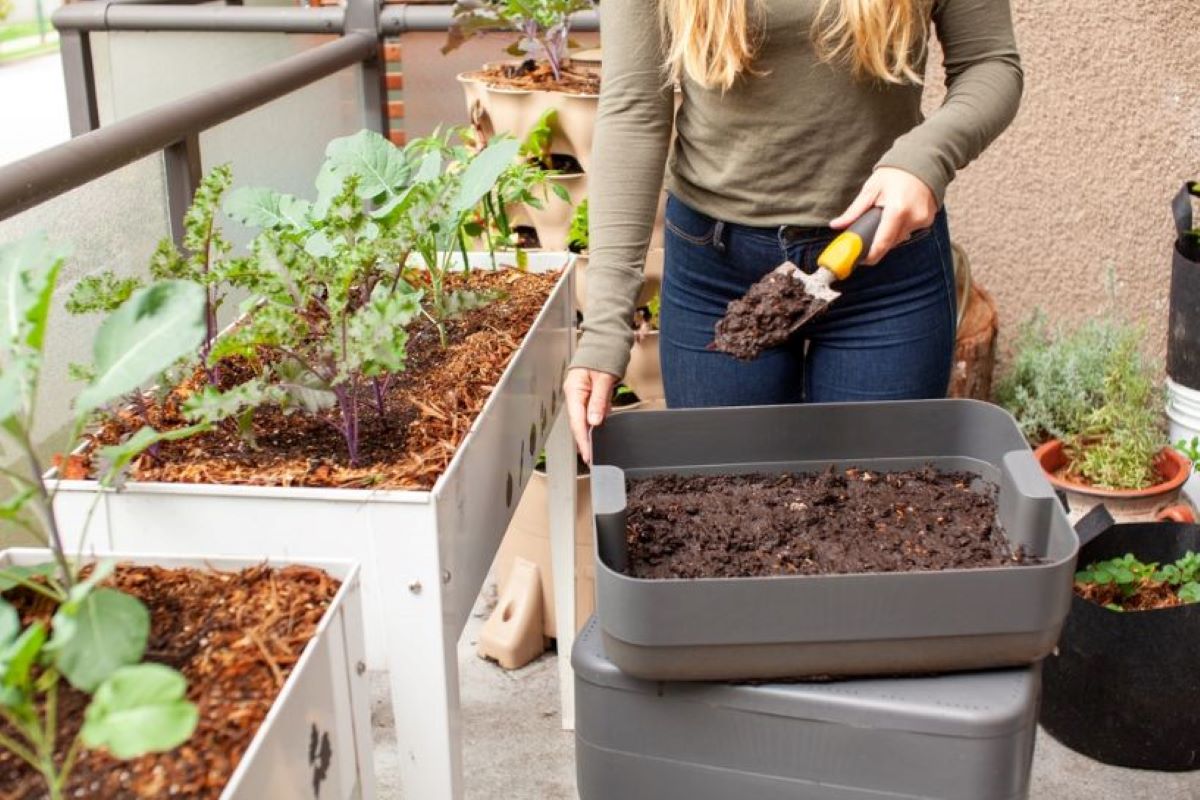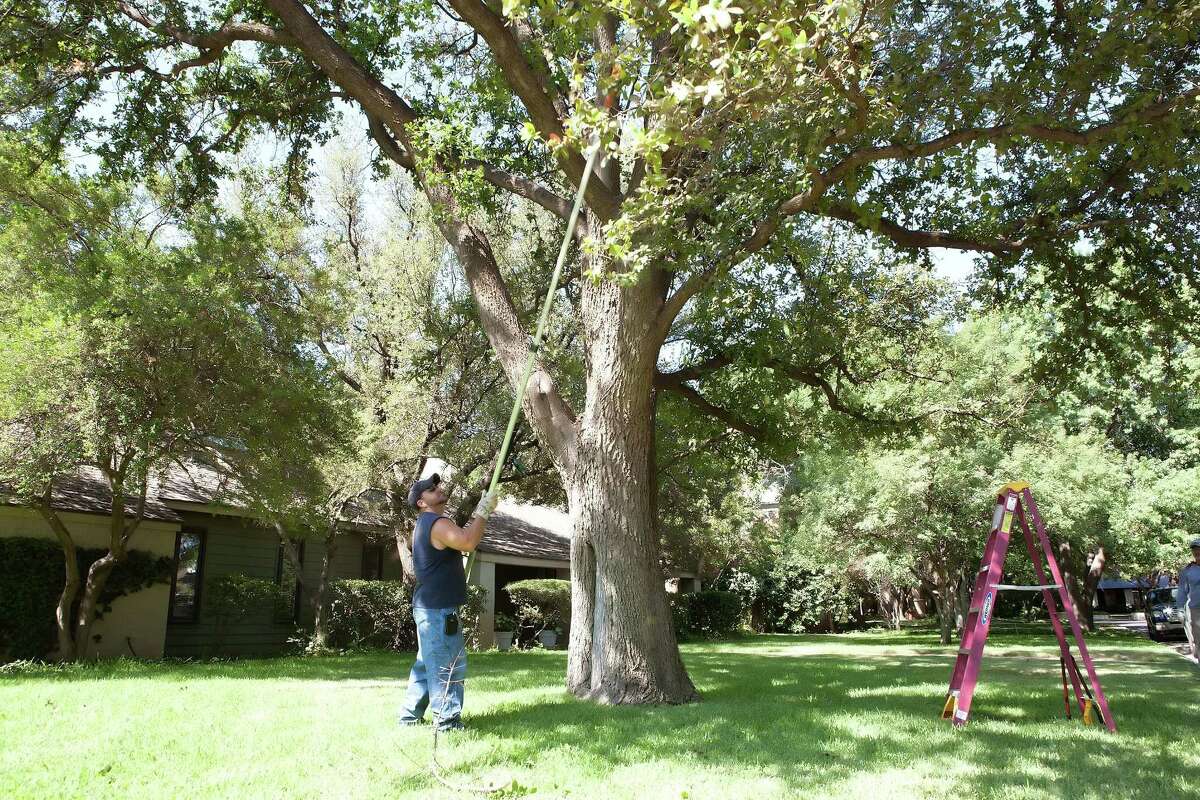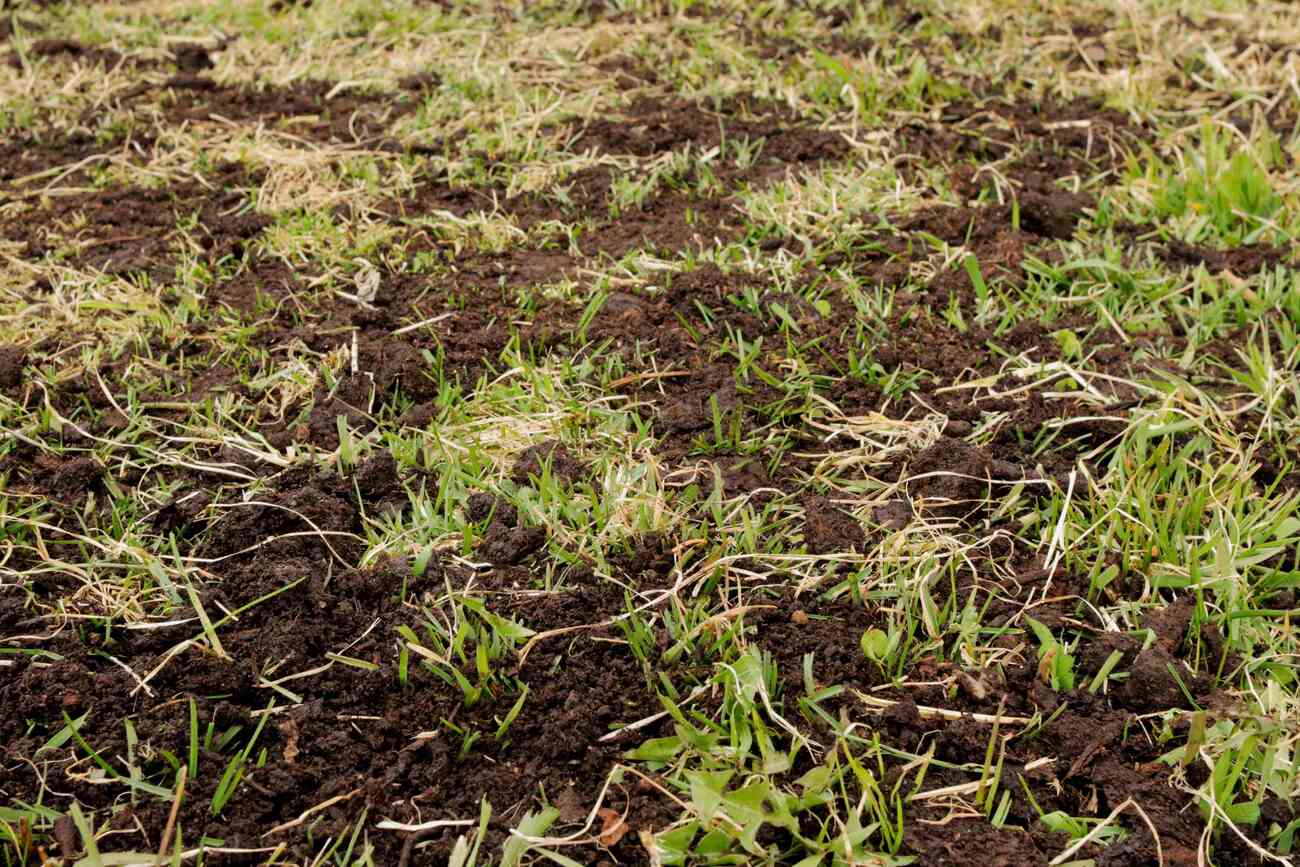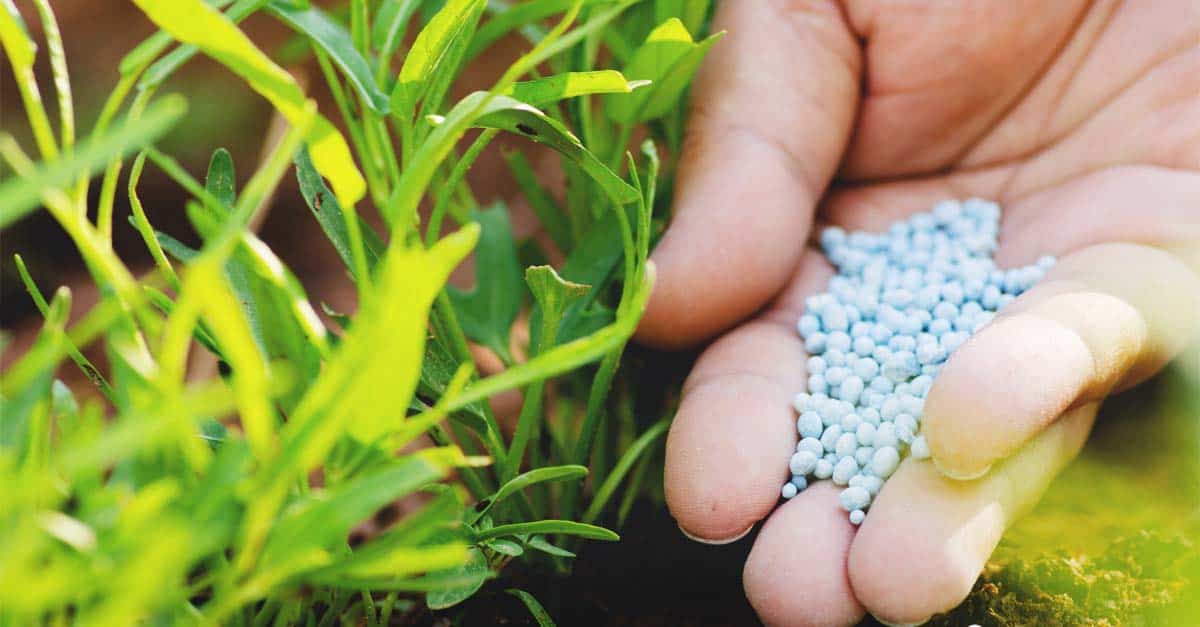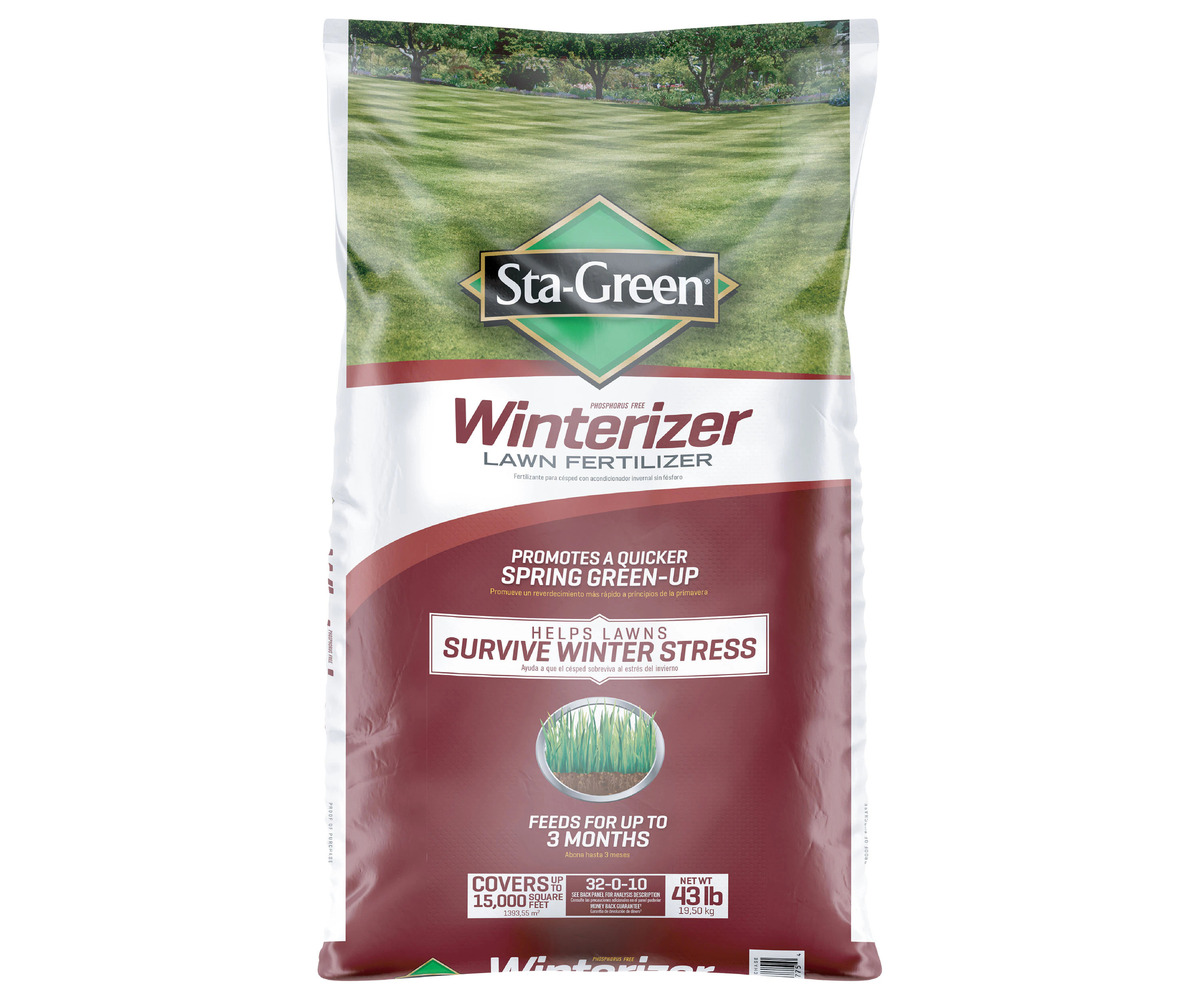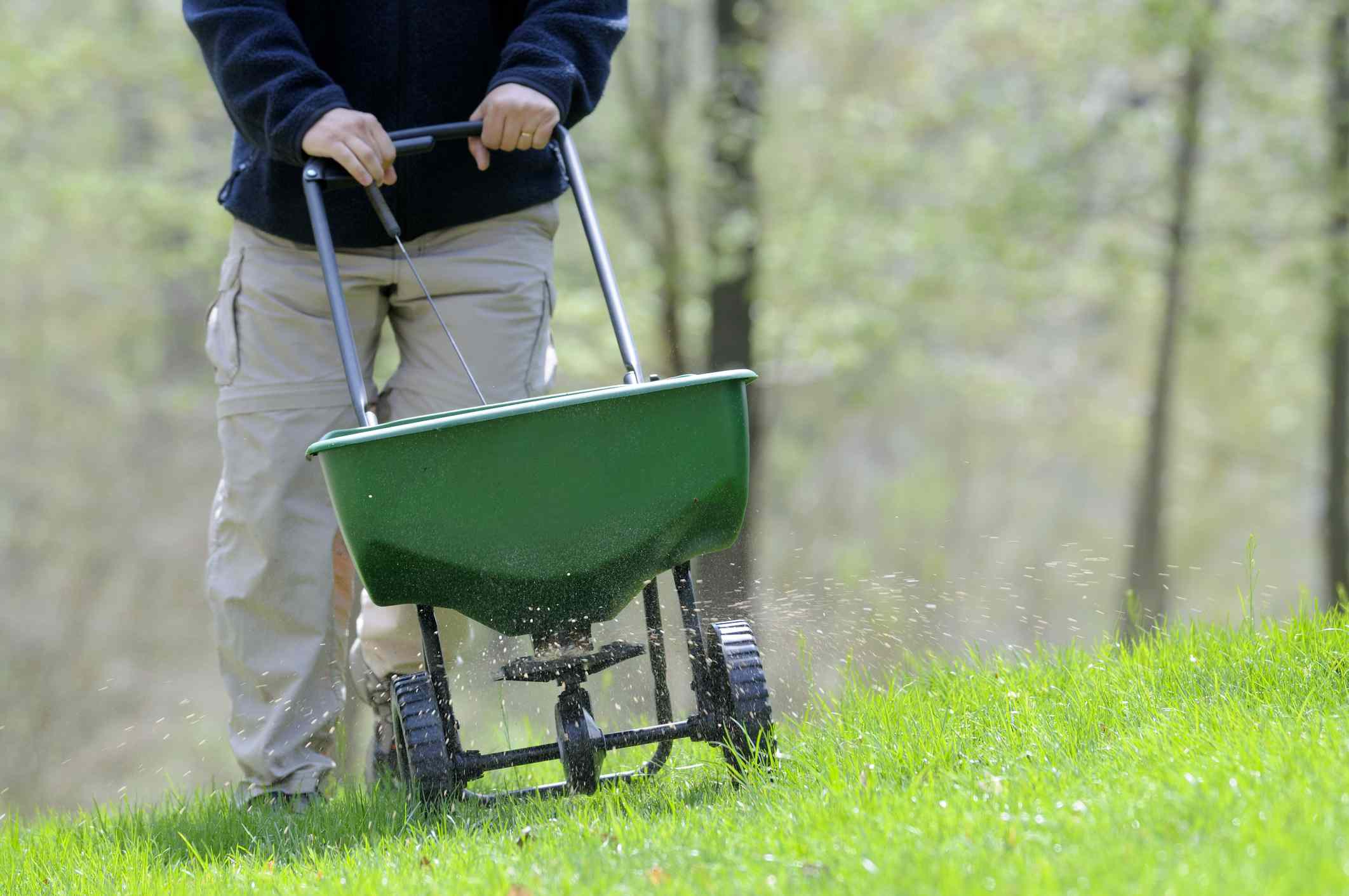Home>Gardening Techniques>When To Apply Winter Fertilizer In Texas


Gardening Techniques
When To Apply Winter Fertilizer In Texas
Modified: January 22, 2024
Enhance your seasonal gardening in Texas with our expert tips! Learn when to apply winter fertilizer for a healthy and vibrant garden throughout the cold season.
(Many of the links in this article redirect to a specific reviewed product. Your purchase of these products through affiliate links helps to generate commission for Chicagolandgardening.com, at no extra cost. Learn more)
Table of Contents
Introduction
When it comes to maintaining a vibrant and healthy garden, timing is crucial. The changing seasons bring different challenges and opportunities for gardeners, and winter is no exception. While the cold temperatures may make it seem like gardening is put on hold, there are still important tasks to be done, including the application of winter fertilizer.
Winter fertilizer is specifically formulated to provide essential nutrients to plants during the dormant period. Applying fertilizer during this time can help strengthen the root system, enhance winter survival, and promote healthy growth when spring arrives. However, determining when to apply winter fertilizer in Texas can be a bit more challenging due to the state’s diverse climate and soil conditions.
In this article, we’ll explore the factors that influence the timing of winter fertilizer application in Texas, the benefits it brings to your garden, and the precautions you need to take. Whether you’re a seasoned gardener or a novice, understanding when and how to apply winter fertilizer will help you achieve the best results for your garden.
Factors Influencing Winter Fertilizer Application
When deciding on the timing for winter fertilizer application in Texas, several factors come into play. Understanding these factors will help you determine the best time to give your plants the nutrient boost they need.
Climate: Texas is a large state with varying climate zones, ranging from the humid subtropical climate in the east to the semi-arid climate in the west. The timing of winter fertilizer application will differ depending on which region of Texas you are located in. In general, the application should be done before the ground freezes, which is typically between late November and early December in most parts of Texas.
Soil Temperature: Soil temperature is another important factor to consider. When the soil temperature drops below 50°F (10°C), plants enter a dormant state and their nutrient requirements change. Applying winter fertilizer when the soil is still warm may result in excessive foliage growth, which is not desirable during the dormant period.
Soil Moisture: Moisture conditions also play a role in determining the timing of winter fertilizer application. Ideally, the soil should be neither too dry nor too wet. Applying fertilizer to dry soil will not be effective as the nutrients will not be able to be absorbed by the plants. On the other hand, applying fertilizer to waterlogged soil can lead to nutrient leaching, where the nutrients are washed away before the plants can utilize them.
Plant Type: Different types of plants have varying nutrient requirements. Cool-season grasses, such as fescue and ryegrass, benefit from winter fertilizer as they continue to grow during the cooler months. Warm-season grasses, like Bermuda grass and St. Augustine grass, go dormant in winter and may not require as much fertilizer. Understanding the growth patterns and nutrient needs of your specific plants will help you determine the ideal timing and dosage of winter fertilizer.
Soil Analysis: Conducting a soil analysis prior to applying winter fertilizer is highly recommended. This will help identify any nutrient deficiencies or imbalances in your soil and allow you to tailor your fertilizer application accordingly. It’s essential to provide the right nutrients in the right amounts to support optimal plant growth.
By taking into account these factors, you can make an informed decision on when to apply winter fertilizer in Texas. Adjusting the timing based on your specific climate, soil conditions, and plant type will ensure that your garden receives the nutrients it needs to thrive during the winter months.
Soil Temperature and Moisture Conditions
Soil temperature and moisture conditions are crucial factors to consider when determining the optimal time to apply winter fertilizer in Texas. These factors directly affect the uptake and utilization of nutrients by plants, making them key considerations for successful fertilization.
Soil Temperature: Winter fertilizer is best applied when the soil temperature starts to cool down, but before it reaches freezing temperatures. Typically, this is when the soil temperature dips below 50°F (10°C). Applying fertilizer during this time allows the plants to absorb and store the nutrients in their root systems, ensuring they have adequate nourishment during their dormancy period.
Soil thermometers can be used to measure the soil temperature accurately. It’s important to note that soil temperatures can vary depending on location and weather conditions. Monitoring the local weather forecasts and keeping track of the average soil temperature in your area will help determine the optimal time for winter fertilizer application.
Soil Moisture: Moisture conditions in the soil are equally important when applying winter fertilizer. The goal is to ensure that the soil is neither too dry nor too wet.
If the soil is dry, the fertilizer may not dissolve and distribute evenly, leading to uneven nutrient availability for the plants. Before applying winter fertilizer, it’s essential to water the soil adequately to ensure it is moist, but not saturated.
Conversely, if the soil is excessively wet, the nutrients applied through the fertilization may leach away before the plants can absorb them. This can be a waste of resources and may contribute to environmental pollution. Waiting for the soil to drain properly or applying fertilizer after a period of heavy rainfall can help prevent nutrient leaching.
It’s important to strike a balance with soil moisture, ensuring it is suitable for efficient nutrient uptake. Regular monitoring of the soil’s moisture content and adjusting watering practices accordingly will help ensure optimal conditions for fertilization.
By considering soil temperature and moisture conditions, you can time the application of winter fertilizer to maximize nutrient uptake and promote healthier plants. Keeping a close eye on the weather and understanding how these factors interact with each other will help you make informed decisions and achieve the best results in your garden.
Grass Types and Their Nutrient Requirements
Understanding the different types of grass in your garden and their specific nutrient requirements is essential when considering winter fertilizer application in Texas. Different grass species have varying growth patterns and nutritional needs, so it’s important to tailor your fertilization approach accordingly.
Cool-season grasses: Cool-season grasses, such as fescue and ryegrass, actively grow during the cooler months and benefit from winter fertilizer application. These grasses require a steady supply of nutrients to support their growth and maintain their green color throughout the winter. Nitrogen is a key nutrient for cool-season grasses, as it helps promote leaf and root development. Applying a slow-release fertilizer with a higher nitrogen content in the late fall or early winter will provide the necessary nutrients for these grasses to thrive.
Warm-season grasses: Warm-season grasses, including Bermuda grass and St. Augustine grass, go dormant during the winter months and have different nutrient requirements. While they may not need as much fertilizer during this time, it’s still important to provide them with some nutrients to support their overall health and preparedness for the upcoming growing season. Applying a low-nitrogen and high-potassium winter fertilizer in late fall can help these grasses store nutrients and improve their resilience for the following year.
It’s essential to consider the specific grass types in your garden and their recommended nutrient application rates. Consulting with local gardening experts, utilizing soil tests, or referring to guides specific to your grass type can provide valuable insights into the ideal fertilizer formulations and application schedules.
Another aspect to consider is the presence of other plants in your garden. If you have ornamental plants or flower beds within your lawn area, be mindful of their nutrient requirements as well. Adjusting the fertilizer application to meet the needs of both the grass and the surrounding plants will help maintain a healthy and harmonious garden ecosystem.
By understanding the nutritional needs of different grass types, you can apply winter fertilizer strategically, ensuring the right nutrients are provided in appropriate amounts. This targeted approach will optimize the health and appearance of your grass throughout the winter season and set the stage for robust growth when spring arrives.
Benefits of Winter Fertilization
Winter fertilization may seem counterintuitive since the growing season is at a halt, but it offers several benefits that contribute to the overall health and vitality of your garden. Here are some key advantages of applying winter fertilizer:
Enhanced Root Development: Winter fertilizer provides essential nutrients that promote strong root development. Even though the visible growth of plants may be minimal during this time, their roots continue to grow and establish. By supplying nutrients like phosphorus and potassium, winter fertilization helps plants develop a robust root system, which sets the foundation for healthy growth when spring arrives.
Improved Winter Survival: Winter can be harsh on plants, but the application of winter fertilizer boosts their resilience against cold temperatures and other environmental stressors. Adequate nutrient levels help plants withstand freezing temperatures, reducing the risk of winter damage. This is particularly important for vulnerable plants, such as young trees or recently transplanted shrubs, that may need extra support to survive the winter.
Promotion of Spring Growth: Winter fertilizer sets the stage for vigorous growth when the growing season resumes. The stored nutrients from winter fertilization provide plants with a head start, enabling them to allocate energy towards early spring growth rather than searching for nutrients. This results in a quicker and more vibrant emergence of new shoots and leaves once the weather warms up.
Enhanced Nutrient Availability: Applying winter fertilizer ensures that plants have an ample supply of nutrients during their dormant period. Even though the growth is slow or paused, plants still need essential elements to support their metabolic processes. Providing the right nutrients at the right time improves nutrient availability and uptake when the plants need them the most.
Overall Health and Appearance: The combination of enhanced root development, improved winter survival, and the promotion of spring growth leads to healthier and more attractive plants. Winter fertilization contributes to lush green foliage, increased disease resistance, and a more robust overall appearance. It helps maintain the beauty of your garden throughout the dormant period and sets the stage for a thriving landscape in the coming seasons.
Winter fertilization plays a critical role in supporting the long-term health and vitality of your garden by providing essential nutrients, strengthening plants, and improving their resilience. Considering the benefits it brings, incorporating winter fertilizer into your gardening routine is a wise investment that ensures the long-term success of your landscape.
Potential Risks and Precautions
While winter fertilization offers numerous benefits, it’s crucial to be aware of potential risks and take necessary precautions to ensure the health and safety of your garden. Here are some key considerations:
Overfertilization: Applying excessive amounts of winter fertilizer can harm your plants rather than benefiting them. Overfertilization can cause nutrient imbalances, salt buildup in the soil, and even burn the roots. It’s essential to carefully follow the recommended application rates and avoid the temptation to apply more fertilizer, thinking it will provide better results. Always remember that more is not necessarily better, and a controlled approach is key.
Environmental Impact: It’s important to consider the potential environmental impact of winter fertilizer application. Some fertilizers contain chemical compounds that can leach into water sources or contribute to air and soil pollution. To minimize environmental impact, opt for slow-release or organic fertilizers that have a reduced potential for leaching. Applying fertilizers just before rain is expected can also help mitigate the risk of runoff.
Timing and Weather Conditions: The timing of winter fertilizer application is crucial. Applying fertilizer too early when the grass is still actively growing or too late when the ground is frozen may not yield the desired results. Additionally, applying fertilizer during heavy rainfall or snow can lead to nutrient runoff. Aim to apply winter fertilizer when the soil is moist but not saturated, and ensure that rain is not expected immediately after application.
Application Accuracy: Ensure that you apply winter fertilizer evenly across your lawn or garden. Uneven application can result in patchy growth or nutrient imbalances. Use a spreader or applicator to ensure a uniform distribution of the fertilizer and follow label instructions for appropriate coverage. Be mindful of areas near water bodies or sensitive plants, and take precautions to prevent fertilizer runoff into these areas.
Soil Testing: Conducting a soil test prior to winter fertilizer application is highly recommended. Soil testing provides valuable insights into your soil’s nutrient levels, pH balance, and potential nutrient deficiencies. It helps you determine the precise fertilizer formulation and dosage needed to address specific soil deficiencies and avoid unnecessary fertilization.
By considering these potential risks and taking necessary precautions, you can minimize the negative impacts and optimize the benefits of winter fertilizer application. Careful planning, accurate application, and environmental awareness will ensure that your garden receives the nourishment it needs while preserving the health of the surrounding ecosystem.
Recommended Timing for Winter Fertilizer Application
Determining the optimal timing for winter fertilizer application in Texas is crucial to ensure maximum effectiveness and results. While the specific timing may vary depending on your location and the characteristics of your garden, here are some general guidelines to consider:
Cool-Season Grasses: For lawns with cool-season grasses, such as fescue and ryegrass, the ideal time to apply winter fertilizer is in the late fall or early winter, before the ground freezes. This timing allows the grass to absorb and store the nutrients before entering dormancy. Applying the fertilizer too early may result in excessive growth, while applying it too late may not provide sufficient time for the grass to uptake the nutrients before the winter season.
Warm-Season Grasses: Warm-season grasses, like Bermuda grass and St. Augustine grass, go dormant during the winter months and have different fertilizer requirements. It is generally recommended to apply a low-nitrogen, high-potassium winter fertilizer in late fall, around the time when the grass is starting to enter dormancy. This type of fertilizer helps the grass store nutrients and strengthens its resilience for the upcoming growing season.
Climate Considerations: Keep in mind that Texas has diverse climate zones, which can impact the timing of winter fertilizer application. In areas with milder winters, such as the southern and coastal regions, the application can be done slightly later in the season. Conversely, in northern and inland areas where the winters are colder and the ground freezes earlier, the application should take place earlier in the fall.
Soil and Weather Conditions: The condition of the soil and the weather forecast also play a role in determining the timing of fertilizer application. It is important to apply winter fertilizer to moist soil that is not too dry or too wet. Timing the application after rainfall or manually watering the lawn beforehand can ensure optimal soil moisture. Additionally, it’s beneficial to choose a day for application when rain is not expected within the next 24-48 hours to minimize runoff and ensure proper absorption of the nutrients into the soil.
Personal Observation: Paying attention to the growth patterns and behavior of your grass can provide valuable insights for timing fertilizer application. If you notice a slowing growth rate, color fade, or signs of nutrient deficiency, it may be an indication that it’s time to apply winter fertilizer. Conversely, if your grass is still actively growing, it’s best to hold off on fertilizer application until closer to its dormant phase.
Ultimately, the ideal timing for winter fertilizer application will depend on various factors, including grass type, climate, soil conditions, and personal observation. Adhering to recommended guidelines, considering local factors, and adjusting based on specific circumstances will help ensure that your lawn receives the necessary nutrients for a successful and healthy winter dormancy period.
Conclusion
Timing is key when it comes to applying winter fertilizer in Texas. By considering factors such as soil temperature, moisture conditions, grass types, and climate, you can determine the optimal timing for fertilization. Applying winter fertilizer provides numerous benefits, including enhanced root development, improved winter survival, promotion of spring growth, and overall health and appearance of your garden.
However, it’s important to be aware of potential risks and take precautions to prevent overfertilization, minimize environmental impact, and ensure accurate application. Conducting a soil test before fertilization and monitoring the weather conditions can help in achieving optimal results.
When it comes to the timing of winter fertilizer application, cool-season grasses benefit from late fall to early winter application, while warm-season grasses should receive a low-nitrogen, high-potassium winter fertilizer in late fall. Regional climate variations and local factors influence the exact timing within these guidelines.
In conclusion, understanding when to apply winter fertilizer in Texas is crucial for maintaining a healthy and vibrant garden throughout the dormant period. By considering the specific needs of your grass, local climate conditions, and adhering to recommended guidelines, you can ensure that your garden receives the nutrients it needs to thrive during the winter months and be prepared for the upcoming growing season.


